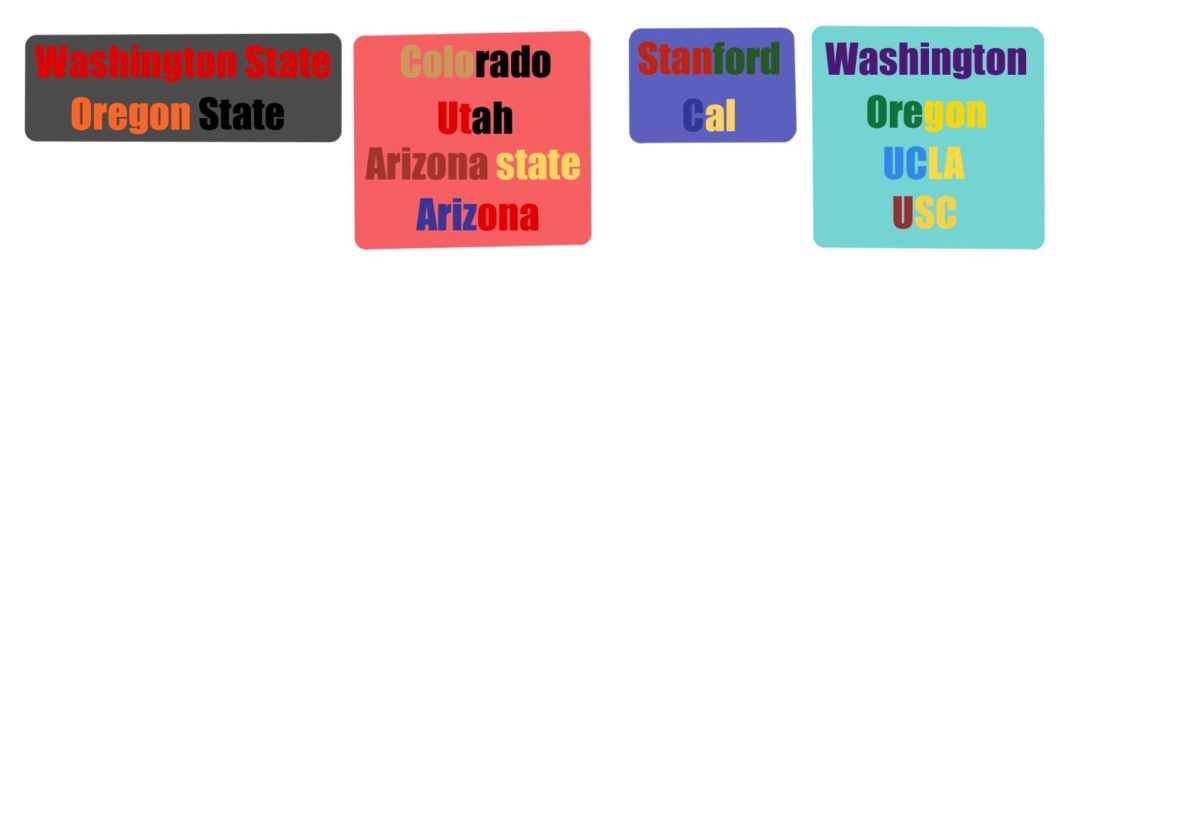The Southwest Conference. Big West Conference. The Original Big East. These are former Football Bowl Division (FBS) Conferences. Soon, one more will join them: The Pacific-12 Conference, also known as the PAC-12. All because of the greed of some college presidents, college football is changing, and not for the better.
On June 30, 2022, the demise of the PAC-12 began. UCLA and USC declared their intention to leave the PAC-12 and join the Big Ten in 2024 due to the upcoming expiration of the PAC-12’s TV deal. After several deals fell through throughout the next year, the University of Colorado was the first school to abandon the clearly sinking ship, sharing their intention of joining the Big 12 in 2024 on July 27th. The University of Washington and the University of Oregon continued the trend, leaving their in-state rivals Washington State University and Oregon State University in the dust. They joined USC and UCLA in the far more lucrative Big Ten one day later. On September 1, Stanford University and the University of California-Berkley ended all hope for the future of the PAC-12 by announcing they would join the Atlantic Coast Conference (ACC) in 2024.
There is one major reason for all of this: money. Oklahoma and Texas will see their TV revenue shares increase by over $20 million the year they jump to the SEC, according to the Sports Business Journal (SBJ). However, the biggest revenue jump is for the former PAC-12 schools. The final contract offer for the PAC 12 pre-exodus is not even on the table anymore, as the PAC-12 has slowly become the PAC-2. That offer, as reported by multiple outlets, including The Athletic, SBJ, and Forbes, was 25 million dollars per school.That is 55 million dollars less than what the University of Washington and the University of Oregon will recieve when they become full members of the Big Ten. That’s ridiculous.
Money has truly taken over college football recently. Between conference realignments and the recently approved usage of Name, Image, and Likeness (NIL) deals, college football has become less about the school itself and more about who can pay their recruits the most money. The usage of NIL deals allows college players to make money off of their name, image, and likeness. This leads to absurdity such as Jaden Rashada, a college recruit, backing out of a commitment to a school after it came to light that the money he was promised was never going to be there. Situations like Rashada’s are what’s turning college football into a professional development league instead of a collegiate league, like it’s supposed to be. In addition to that, it’s also getting rid of tradition.
College conferences used to be almost entirely geographic. Now, we have California schools joining the Atlantic Coast Conference. This is ruining the years of history college football has, from state rivalries to ease of travel for fans. There is a point where things can go too far. We have reached that point.






